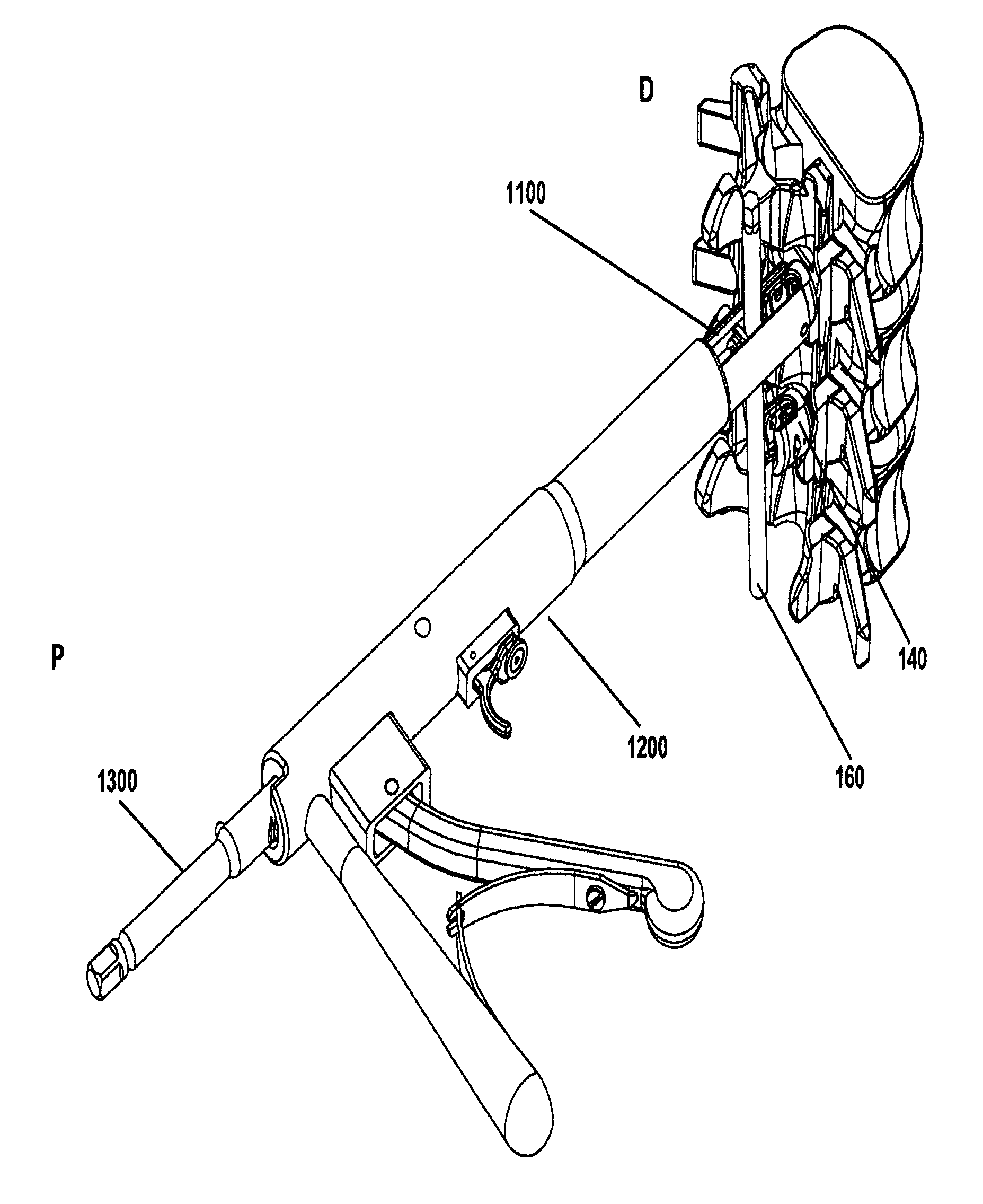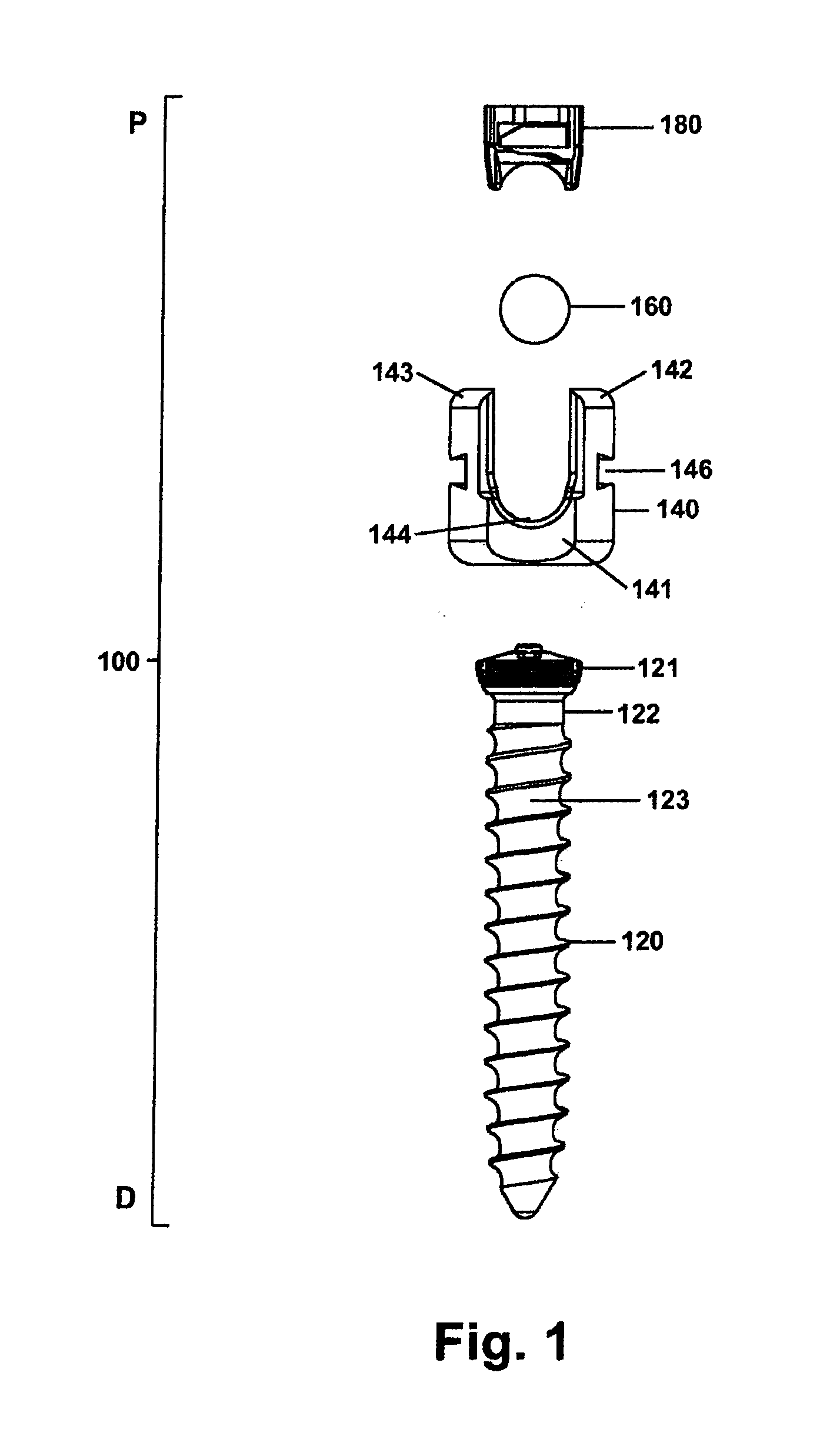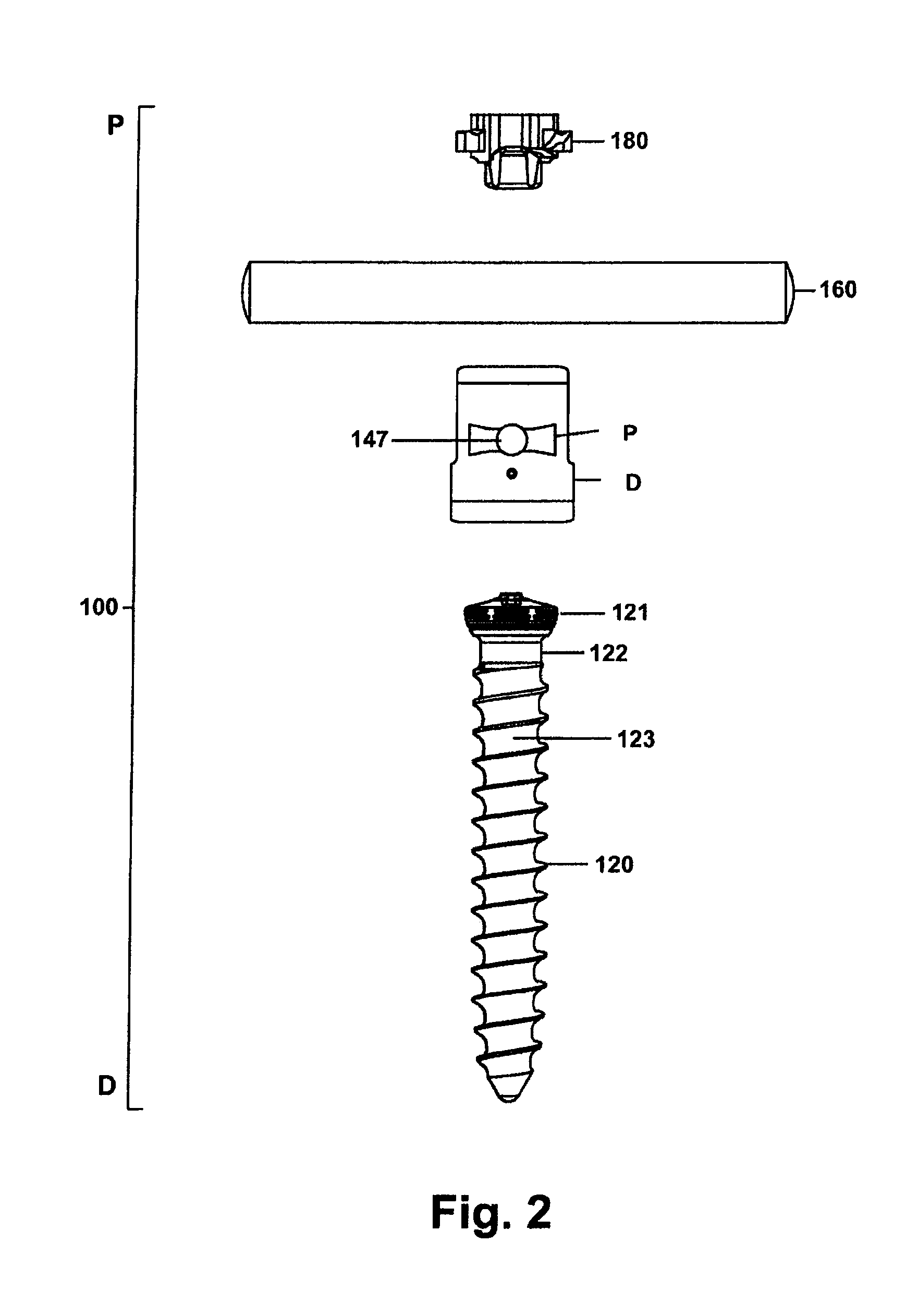Spinal Rod and Screw Securing Apparatus and Method
- Summary
- Abstract
- Description
- Claims
- Application Information
AI Technical Summary
Benefits of technology
Problems solved by technology
Method used
Image
Examples
Embodiment Construction
[0056]Prior rod persuader designs typically rely on threaded drive systems, such as in U.S. Pat. No. 7,278,995 to Nichols et al. that are cumbersome and slow because they require multiple rotations of a handle for linearly reducing a spinal rod. The '995 patent requires the surgeon to manipulate two separate handles in order to linearly advance a drive rod and also rotate the drive rod to lock a cap in a coupling member. The use of two handles complicates the tool and the girth of the instrument typically requires the surgeon to occupy both hands in use. The advantage of the improved drive tool apparatus is actuation through a pawl on a unitary drive rod by a mechanical linkage allowing for rapid reduction. The reduction of the drive rod is further expedited in that it can be manually advanced distally through the drive tool while being mechanically restrained from moving in the proximal direction. Manual advancement is undertaken until it is determined that the mechanical advantage...
PUM
 Login to View More
Login to View More Abstract
Description
Claims
Application Information
 Login to View More
Login to View More - R&D
- Intellectual Property
- Life Sciences
- Materials
- Tech Scout
- Unparalleled Data Quality
- Higher Quality Content
- 60% Fewer Hallucinations
Browse by: Latest US Patents, China's latest patents, Technical Efficacy Thesaurus, Application Domain, Technology Topic, Popular Technical Reports.
© 2025 PatSnap. All rights reserved.Legal|Privacy policy|Modern Slavery Act Transparency Statement|Sitemap|About US| Contact US: help@patsnap.com



